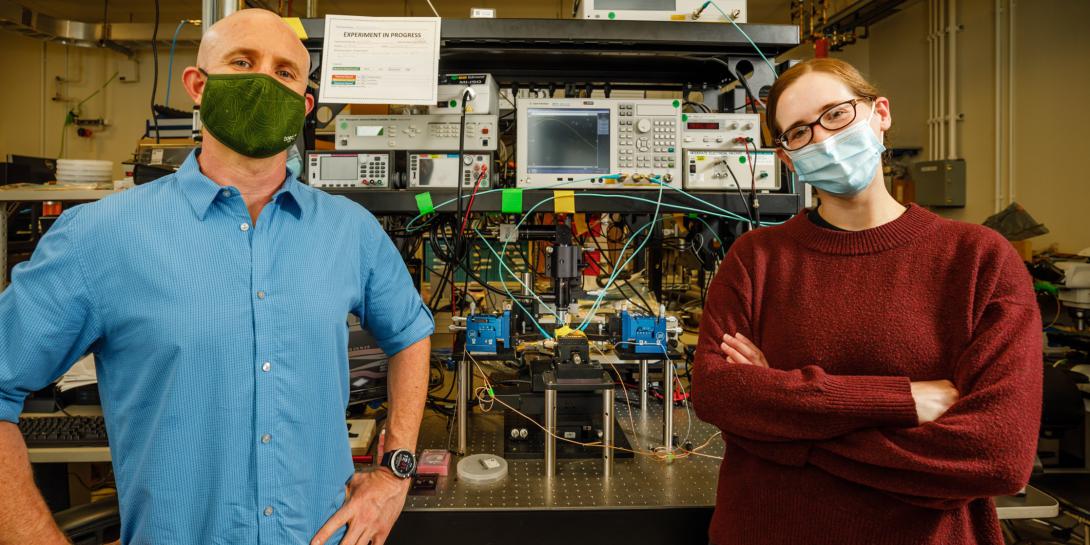Sandia Researchers See Success in Miniaturizing Wireless Technology
Scientists at Sandia National Laboratories in Albuquerque, New Mexico, have constructed a miniaturized acoustic amplifier, which they claim is the world’s smallest. The new acoustic, 276-megahertz amplifier is 0.0008 square inch (0.5 square millimeter). The Sandia researchers made the amplifier with thin-film semiconductor materials that are only 83 layers of atoms thick—1,000 times thinner than a human hair, the laboratory reported. In addition, the researchers were able to successfully harness the use of sound waves for the acousto-electric chip that includes the radio-frequency amplifier, circulator and filter.
“Acoustic wave devices are inherently compact because the wavelengths of sound at these frequencies are so small,” said Lisa Hackett, a scientist at Sandia.
The researchers’ groundbreaking acoustic circulator, a key radio component that separates transmitted and received signals, represents another step in ability to decrease the size of and increase the sophistication of radio wave technologies.
“We are the first to show that it’s practical to make the functions that are normally being done in the electronic domain in the acoustic domain,” said Matt Eichenfield, another scientist at Sandia.
Scientists last made progress in acoustic radio-frequency amplifiers decades ago—with the last prominent academic research published in the 1970’s, according to Sandia. Breakthrough nanofabrication capabilities are now allowing the Sandia researchers to not only miniaturize capabilities but to also boost performance by 10 times. They have boosted the signal strength by a factor of 100 in 0.008 inch (0.2 millimeter) and the energy draw is only 36 volts of electricity and 20 milliwatts of power.
“[It] demonstrates the vast, largely untapped potential for making radios smaller through acoustics,” the lab indicated in a release.





Comments